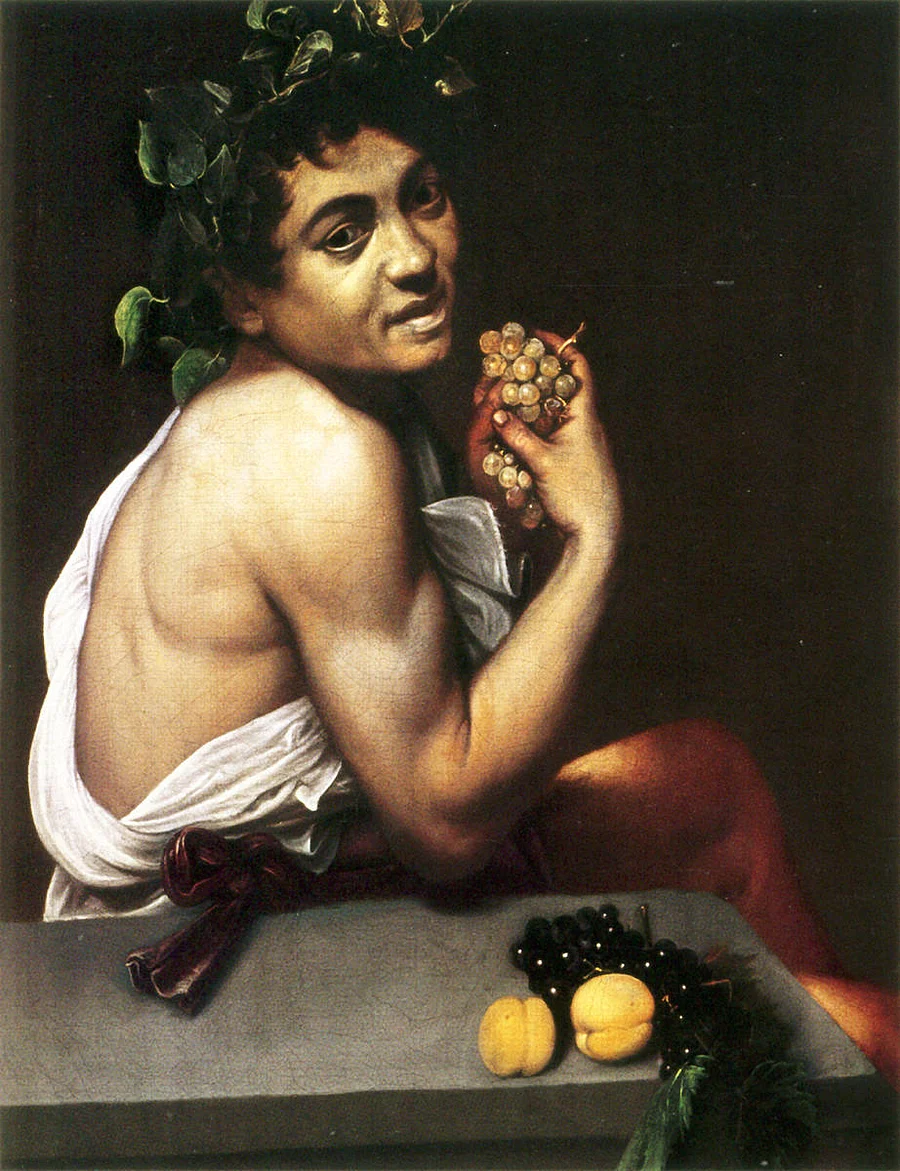
One of the pre-eminent artists of the Renaissance, Michelangelo Merisi da Caravaggio was both influential and controversial in life as well as in art. Even before his premature death in violent and mysterious circumstances, on July 18, 1610, aged 39, the impact of his art was felt in many parts of Europe.
By all accounts, Caravaggio was known to be temperamental and prone to drastic mood swings. He loved drinking and gambling, which often ended up in ugly fights and confrontations. His indiscretions and recklessness got him into trouble with the law. On more than 10 occasions, he faced trial on charges like swearing at a constable, writing to mock a rival painter and flinging a plate at a waiter.
Caravaggio’s waywardness and misconduct are attributed to his childhood and the violent times he was born into. Orphaned at an early age of six, he was witness to almost his entire male family getting wiped out in a devastating plague in Milan. Consequently, his growing up years were wild and traumatic; he seemed to enjoy spending time on the seamy side of dark streets with a group of shady characters.
Caravaggio was a vigorously violent man in a vigorously violent time, observes Andrew Graham-Dixon, author of ‘Caravaggio: A Life Sacred and Profane’. “He had always been an outsider, a troublemaker, a difficult and dangerous man”. In 1606, after killing a man during a scuffle, Caravaggio fled Rome and spent the rest of his relatively-short life on the run — in Naples, Malta and Sicily. Four years later, on his way to Rome to seek a pardon from the Pope, he reportedly died on a boat, which he had boarded in Naples. The actual cause of death is not clear. Diseases like syphilis, malaria and lead poisoning are cited; while some speculate that he might have actually been murdered.
Surprisingly, all his transgressions and misdemeanours notwithstanding, Caravaggio’s art blossomed unabated throughout his adult life. He was admired and supported by several patrons and protectors who, as one historian notes, “responded, sometimes in spite of themselves, to the artist’s phenomenal imagination, the beauty and brilliance of his painting, his raw emotional exposure and the acute sensitivity that went with it.” In fact, Caravaggio created some of his groundbreaking chiaroscuro paintings when he was on the run.
Technical brilliance
Caravaggio’s robustly realistic paintings were unique in many ways and exuded a magnetic pull. They were far removed from the rather apologetic, mannerist style that dominated Italian art in the later part of the 16th century.
His strong, powerful and dramatic compositions highlighted a rare and unprecedented technical brilliance. The manner in which he handled light and shade was immaculate, imaginative and unparalleled. Most of all, in his Biblical and theological-themed paintings, he portrayed devotional characters as if they were real ones “inhabiting the dusty streets of contemporary Rome or Naples or Sicily.” He was not averse to employing ordinary people and even prostitutes as models for historical characters in order to create absolutely believable scenes, which attracted his many admirers and patrons.
Dixon says that Caravaggio’s art was so compelling, so original, so unforgettable, that people were simply transfixed by it. “They fought to look at it, gathering in the hundreds every time a new altarpiece was unveiled and they fought to acquire it, even though everything else about Caravaggio — his terseness, his weird dress sense, his violence, his sexual reputation, his unerring gift for getting into trouble — seemed so disconcerting and strange.”
Centre of his own world
Caravaggio often placed himself in the centre of several of his paintings. He dressed himself as different characters and struck uncanny poses. His unique way of role-playing left a deep impression on not only the viewers of his times, but also on many contemporary artists of the present day.
“The first person who started to play this role in his own work as both a character as well as someone who has a narcissistic interest in himself was Caravaggio,” says British art critic Waldemar Januszczak. “He could be in his own art in a different way. And he could put himself down in his art. He can be sick, he can be funny, he can be ridiculous, he can be drunk … it does not matter to him. There’s an artistic confidence at work here; that he is important in his own art and he should appear in it. And that passed on and has led to innumerable examples of people doing the same.”
A lost genius
Caravaggio was an enigma and even before his premature death in violent and mysterious circumstances, the influence of his art was felt in many different parts of Europe. Many painters copied his style quite brazenly and flaunted them with aplomb.
Paradoxically, Caravaggio himself was forgotten by the academic world for almost 400 years, but was rediscovered in the post-war era of the 20th century.
Among the many contemporary artists who have been inspired by Caravaggio is Cindy Sherman, the influential American artist whose work consists mainly of photographic self portraits in which she models herself as various historical and contemporary characters in striking costumes, poses and contexts.
In 2012, Sherman took on the role of Caravaggio’s ‘Sick Bacchus’, striking the exact same pose, wearing the exact attire as the original painting of the Italian master.
Award-winning Hollywood director Martin Scorsese whose films often portray aspects of violence, guilt and redemption is another unabashed Caravaggio admirer.
“I was instantly taken by the power of Caravaggio’s pictures. Initially I related to them because of the moment that he chose to illuminate in the story... It was like modern staging in film; it was so powerful and direct. He would have been a great filmmaker, there’s no doubt about it… Making films with street people was what it was really about, like he made paintings with them.”